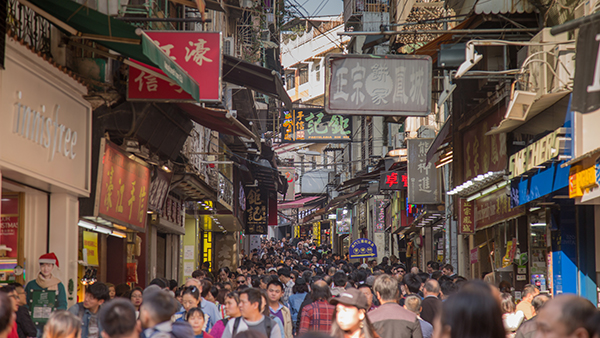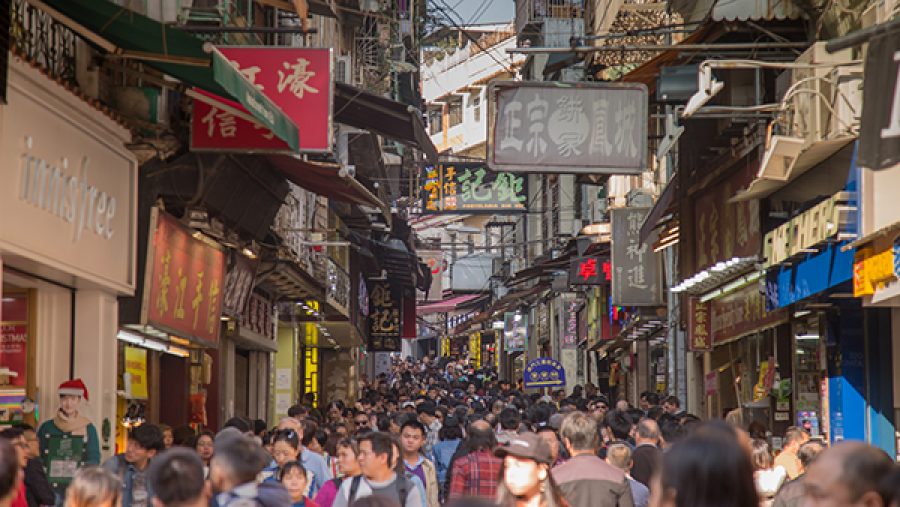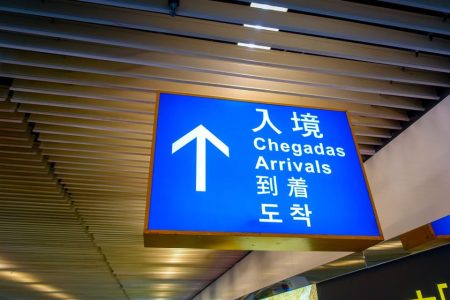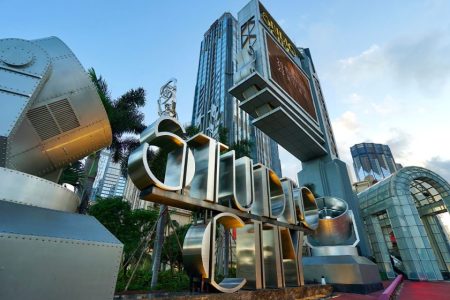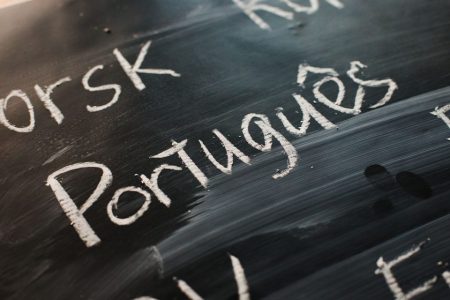The total population of Macau has risen over the last five years at a faster rate than the number of households in the territory, according to a statement from the Statistics and Census Service (DSEC). At the same time, the average number of occupants per household has also fallen. No explanation for the phenomenon was offered in the statement.
The analysis originates from the 2016 Population By-census, which shows that the MSAR population increased by 17.8 per cent over the last five years, reaching around 650,900 compared to around 552,500 in the 2011 census.
In that five-year period, the number of non-resident workers living in the territory soared by 68.8 per cent to a total of 105,200, while the resident population (excluding non-resident workers and foreign students) increased by 10.5 per cent to 536,400.
Accordingly, the average annual growth rate of the population of Macau was 3.3 per cent over the past five years, according to DSEC’s analysis. This figure is considerably higher than the average growth rate between 2006 and 2011, which measured 1.9 per cent.
Macau-based sociologist Larry So told the Times that Macau’s growing population would result in greater housing pressures in the region but would not affect education much, as most of the city’s institutions are still seeking to attract more students.
“I think there is a lot of concern over housing,” said So. “If the population is increasing this much, the government will have a problem calculating how many new houses will be needed. We still don’t have an exact number of those waiting for public housing.”
“However, it will definitely not be so much of a problem for education as there are still many institutions still trying to attract students and [are now looking] to mainland China for that,” added the Macau-based academic.
Among the total population, just over 40 per cent (265,100) of those living in Macau were born in the territory, while 43.6 per ent (284,100) were born in mainland China.
The total number of households in the territory reached 188,600, up by 10.4 per cent compared to five years ago. The average household included 3.06 people in the latest census, a slight decrease from the 3.08 recorded in 2011.
According to DSEC’s analysis, the population density of the MSAR was up by 15.9 per cent in 2016, from 18,478 persons per square kilometer to about 21,400.
In a statement, the bureau extrapolated that “the completion of public housing units in Taipa and Coloane, coupled with an increase in foreign students” resulted in significant population growth in certain parts of the MSAR.
The areas of Coloane Island, Pac On and Taipa Grande, and Universidade and Baía de Pac On each registered explosive population growth of 531 per cent, 127 per cent and 99 per cent respectively. At the same time, Areia Preta and Iao Hon remained the most populous district, accounting for 11.8 per cent of the territory’s total population.
Other data collected in the census revealed that the median age of the total population increased from 37 in 2011 to 37.5 in 2016, whereas that of the Macau resident population rose by 0.7 years to 38.8.
The male population in the MSAR totaled 314,000 and the female population numbered 336,800, accounting for 48.2 per cent and 51.8 per cent of the total respectively.
The gender ratio was therefore 93.2 males per 100 females, marking a slight increase from 92.3 in 2011. The gender ratio of the resident population was lower at 90.2, a further decline from 92.7 five years ago.
(Macau News / Macau Daily Times)
